16. Professional Ethics in the Workplace
Jamie Noakes
Introduction
Professionalism in the workplace regarding ethical behaviour can be a sharp learning curve for many students, especially when navigating cultural norms. This chapter focuses on professionalism in the workplace in terms of ethics, employment laws, and human rights. This chapter is packed full of resources and activities that will help you further understand your rights in the workplace plus help you understand and develop appropriate ethical behaviours in a variety of industries.
Learning Objectives
By the end of this chapters, you should be able to:
- Define what ethics means to you.
- Recognize an industry and corresponding ethical issues that may occur within it.
- Identify ethical issues that students may face in the workplace.
What are Professional Ethics?
Professional ethics are the foundation of responsible behaviour within a specific profession or workplace. They consist of principles and standards that guide individuals in their professional conduct, emphasizing values such as integrity, honesty, accountability, and respect. By adhering to these ethical standards, professionals contribute to fostering a positive work environment, maintaining trust among colleagues and clients, and upholding the reputation of their profession.
The term “ethics,” derived from the Greek word ethikos, refers to the study of right and wrong conduct (Gundugurti et al., 2022). Ethics serve as a guiding framework for individuals and organizations, influencing decisions and actions that reflect core values. In the context of professional ethics, this framework focuses on the specific ethical standards and behaviours expected within various industries or professions.
Understanding and applying professional ethics are essential for ensuring consistent, fair, and ethical decision-making across different work environments. To begin, let’s start with the definition of professional ethics.
Definition of Professional Ethics
The term “professional ethics” refers to the principles, standards, and codes of conduct that govern the behaviour and interactions of individuals within a particular profession (Navran, 2024). It outlines the moral obligations and responsibilities that professionals are expected to uphold in their professional practice (Royal Architectural Institute of Canada, 2020). Professional ethics play a pivotal role in fostering trust, integrity, and accountability within the workplace (Crane, et al., 2019). By adhering to ethical standards, professionals demonstrate their commitment to honesty, fairness, and respect, thereby enhancing the reputation and credibility of both themselves and their organizations. Moreover, upholding professional ethics is essential for maintaining the welfare and safety of clients, colleagues, and the broader community.
Professional ethics play a crucial role in shaping the workplace environment and the relationships between colleagues, clients, and stakeholders (Pless, & Maak, 2004). By adhering to professional ethics, individuals can maintain trust, credibility, and integrity in their professional interactions. This, in turn, contributes to a positive work culture and helps organizations achieve their goals effectively.
Professional ethics can be defined as the moral guidelines that govern the behaviour of individuals in a professional setting. These guidelines are based on values such as honesty, integrity, and fairness, and they help individuals make ethical decisions and conduct themselves ethically in their professional roles.
Exercise 16.1
Personal Ethics Definition
Think about what ethics means to you, and create your own personalized definition in just a short sentence or two.
If you are using a printed copy, you can scan the QR code with your digital device to go directly to Exercise 16.1 Personal Ethics Definition
History of Professional Ethics
Professional ethics has its origins in ancient times when various fields, such as medicine and law, began to establish codes of conduct to guide the behaviour of practitioners. These early codes were grounded in moral principles, aimed at ensuring that professionals acted in the best interests of their clients, patients, or the public (Jonsen, 2000). Ethical guidance often emphasizes treating others with fairness and respect, as exemplified by the Golden Rule: “Do not do unto others as you would not have them do unto you.” This idea underlines the importance of reciprocal moral responsibility and is foundational to many professional ethical frameworks.
Oaths
In many professions, practitioners are required to take oaths, signifying their commitment to uphold ethical standards. One notable example is the Hippocratic Oath, traditionally taken by physicians. This oath emphasizes key ethical duties, including the responsibility to prioritize patient well-being, practice medicine ethically, and do no harm (Greiner & Kaldjian, 2018). These oaths serve as enduring symbols of ethical accountability and trust between professionals and society.
Code of Ethics
Beyond oaths, many professions have established formal codes of ethics, which provide detailed principles and guidelines for ethical conduct. A code of ethics is a formal document that serves as a roadmap for professional behaviour, helping practitioners navigate ethical dilemmas and resolve conflicts. It outlines core responsibilities, acceptable actions, and mechanisms for maintaining integrity within the profession.
One of the earliest formal codes of ethics was developed by Thomas Percival, who published a code of medical ethics for physicians in 1803. This code was the first of its kind for any professional field and served as the foundation for the American Medical Association (AMA) when it adopted its own code of ethics in 1847, setting a precedent for other professions to follow (Riddick, 2003).
Ethics Videos
Watch the following videos on ethics.
What is Ethics? [4:54 min] by The Ethics Centre (2020a)
If you are using a printed copy, you can scan the QR code with your digital device to go directly to the video: What is Ethics?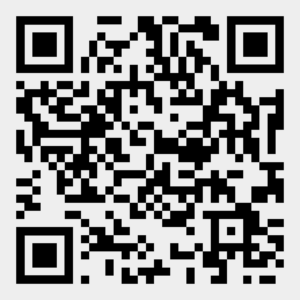
Purpose, Values, Principles – An Ethics Framework [3:43 min] by The Ethics Centre (2020b)
If you are using a printed copy, you can scan the QR code with your digital device to go directly to the video: Purpose, Values, Principles – An Ethics Framework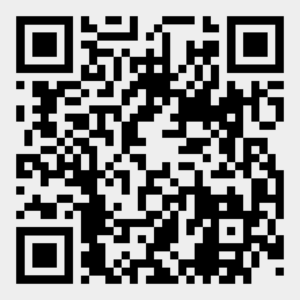
Key Behaviours in Professional Ethics
In any workplace, adhering to basic professional ethics and behaviours is crucial for maintaining a positive work environment, building trust with colleagues and clients, and upholding the reputation of the organization. Understanding and following these ethics are especially important when starting in a new workplace, as they set the foundation for how you will be perceived and how you will interact with others.
Integrity
Integrity is the quality of being honest and having strong moral principles (McFall, 1987). In a professional setting, integrity involves being truthful in your interactions, keeping promises, and acting in a way that is consistent with your values and the values of the organization. Demonstrating integrity helps build trust with colleagues and clients and enhances your credibility in the workplace.
Honesty
Honesty is essential in building trust and maintaining open communication in the workplace. Being honest means providing accurate information, admitting mistakes, and avoiding deception or misleading behaviour. Honesty fosters a culture of transparency and integrity within the organization (Bennis et al., 2008).
Respect
Respect involves treating others with consideration, courtesy, and fairness (Caldwell, 2017). In a professional setting, it is important to respect the opinions, beliefs, and boundaries of others, even when you disagree with them. Respecting your colleagues and clients helps create a positive and inclusive work environment where everyone feels valued and respected.
Responsibility
Taking responsibility for your actions and decisions is a key aspect of professional ethics (Postema, 1980). This includes owning up to mistakes, fulfilling your commitments, and acting in the best interests of the organization and its stakeholders. Being responsible demonstrates your reliability and commitment to your role and contributes to a culture of accountability in the workplace.
Fairness
Fairness involves treating all individuals impartially and without bias (Gottfredson, 1988). In a professional setting, it is important to base decisions and actions on objective criteria and to avoid favouritism or discrimination. Being fair promotes a sense of equity and justice in the workplace and helps maintain harmonious relationships among colleagues.
Transparency
Transparency involves being open and honest in your communication and actions (Turilli & Floridi, 2009). It means providing relevant information to colleagues and clients, explaining your decisions and reasoning, and being willing to address concerns or questions openly. Transparency builds trust and credibility and fosters a culture of openness and collaboration in the workplace.
Accountability
Being accountable means taking responsibility for your actions and their outcomes. This is more around individual accountability than collective responsibility (Afdal & Afdal, 2019). It involves acknowledging mistakes, learning from them, and taking steps to rectify them. Being accountable demonstrates your reliability and integrity and contributes to a culture of trust and responsibility in the workplace (d’Oronzio, 2002).
In a new workplace, understanding and following these basic professional ethics and behaviours are essential for establishing yourself as a trustworthy and respected member of the team. By demonstrating integrity, honesty, respect, responsibility, fairness, transparency, and accountability, you can build positive relationships with your colleagues and clients and contribute to a positive and ethical work environment (Petrick & Quinn, 1997).
What is an Ethical Dilemma?
An ethical dilemma is when a problem presents itself and the potential solutions are conflicting moral obligations. It is important to understand what an ethical dilemma is and how to use a framework to navigate these within a professional work environment.
When faced with ethical dilemmas in the workplace, professionals can use established ethical frameworks to guide decision-making. These frameworks offer different perspectives on morality, helping individuals weigh conflicting obligations. The Center for Professional Personnel Development (n.d.) at the PennState College of Agricultural Sciences outlines five dominant frameworks that can be applied:
1. Virtue Ethics
- Definition: What is moral is what makes us the best person we could be.
- Core Idea: Decisions should align with virtues such as integrity, honesty, and empathy. The goal is to cultivate a strong moral character that naturally leads to ethical actions.
- Application: In the workplace, professionals act with virtues that foster trust, collaboration, and ethical leadership. (Center for Professional Personnel Development, n.d.)
Virtue Ethics Example
2. Deontological Ethics
- Definition: What is moral is what follows from absolute moral duties.
- Core Idea: Ethics are grounded in duties and rules that must always be followed, regardless of the outcomes. These duties may come from laws, organizational policies, or universal moral principles.
- Application: Professionals adhere to established codes of conduct, even if it results in difficult consequences. (Center for Professional Personnel Development, n.d.)
Deontological Ethics Example
3. Utilitarianism Ethics
- Definition: What is morally right is what generates the best outcome for the largest number of people.
- Core Idea: The morality of an action is judged by its consequences. Ethical actions aim to maximize well-being and minimize harm across all stakeholders.
- Application: Organizations often use this approach to balance competing interests and determine policies that promote the greatest overall benefit. (Center for Professional Personnel Development, n.d.)
Utilitarianism Ethics Example
4. Rights-Based Ethics
- Definition: What is moral is that which is in accord with everyone’s rights.
- Core Idea: Ethical actions respect and protect individual rights, such as the right to equality, freedom, privacy, and safety.
- Application: Professionals prioritize policies that safeguard these rights in decision-making, ensuring that no one’s fundamental rights are violated. (Center for Professional Personnel Development, n.d.)
Rights-Based Ethics Example
5. Care-Based Ethics
- Definition: What is moral is that which promotes healthy relationships, the well-being of individuals, and their interdependence.
- Core Idea: Ethics emphasize empathy, compassion, and nurturing relationships. Decisions are guided by a commitment to care for others and support their well-being.
- Application: Professionals focus on building strong, supportive environments that prioritize relationships and mutual respect. (Center for Professional Personnel Development, n.d.)
Care-Based Ethics Example
By understanding these frameworks, professionals can approach ethical dilemmas with greater clarity and consistency, ensuring that their decisions reflect both personal and organizational values.
Ethical Dilemma Videos
To fully understand each of these concepts, review the following video explanations:
Overview: What is an ethical dilemma? [4:33 min] by Universidad de Deusto / Deustuko Unibertsitatea (2021)
If you are using a printed copy, you can scan the QR code with your digital device to go directly to the video: What is an ethical dilemma?
Virtue Ethics: Aristotle & Virtue Theory: Crash Course Philosophy #38 [9:21 min] by CrashCourse (2016d)
If you are using a printed copy, you can scan the QR code with your digital device to go directly to the video: Aristotle & Virtue Theory: Crash Course Philosophy #38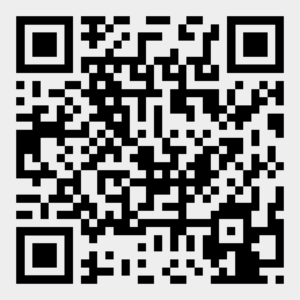
Deontological Ethics: Kant & Categorical Imperatives: Crash Course Philosophy #35 [10:26 min] by CrashCourse (2016a)
If you are using a printed copy, you can scan the QR code with your digital device to go directly to the video: Kant & Categorical Imperatives: Crash Course Philosophy #35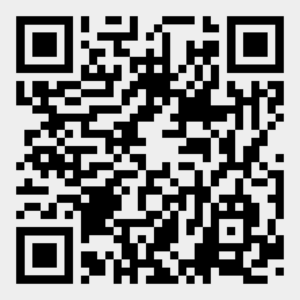
Utilitarianism Ethics: Utilitarianism: Crash Course Philosophy #36 [10:00 min] by CrashCourse (2016b)
If you are using a printed copy, you can scan the QR code with your digital device to go directly to the video: Utilitarianism: Crash Course Philosophy #36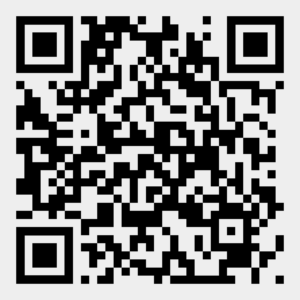
Rights-Based Ethics: Contractarianism: Crash Course Philosophy #37 [9:31 min] by CrashCourse (2016c)
If you are using a printed copy, you can scan the QR code with your digital device to go directly to the video: Contractarianism: Crash Course Philosophy #37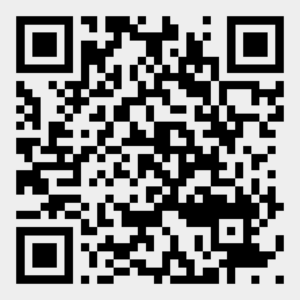
Case-Based Ethics: Alternative Paradigms: Care Ethics and Feminine Ethics [5:25 min] by UvA ComScience Microlectures (2017)
If you are using a printed copy, you can scan the QR code with your digital device to go directly to the video: Alternative Paradigms: Care Ethics and Feminine Ethics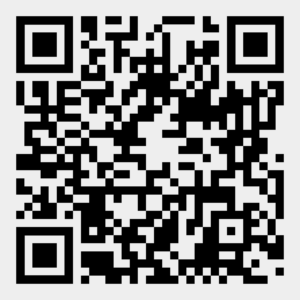
Identifying Ethical Issues in Specific Industries
As you embark on your career journey, it is essential to understand the ethical issues that can arise in different industries. Even if you are not familiar with these industries yet, gaining insight into their unique challenges will prepare you to navigate ethical dilemmas effectively. The following list provides insight into a variety of industries and the ethical issues that may be present:
If you are using a printed copy, you can scan the QR code with your digital device to go directly to Identifying Ethical Issues in Specific Industries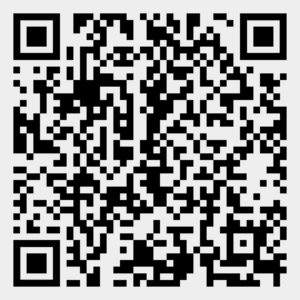
Exercise 16.2
Analyzing Ethical Issues in Different Sectors
- Consider the industries mentioned above, and identify potential ethical issues that could arise in each sector.
- Reflect on how you would approach these ethical dilemmas and what actions you would take to address them ethically.
If you are using a printed copy, you can scan the QR code with your digital device to go directly to Activity 1: Ethical Challenges in Your Future Career
If you are using a printed copy, you can scan the QR code with your digital device to go directly to Activity 2: Comparing Ethical Codes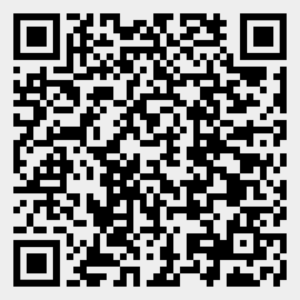
If you are using a printed copy, you can scan the QR code with your digital device to go directly to Activity 3: Exploring Ethical Standards in Your Industry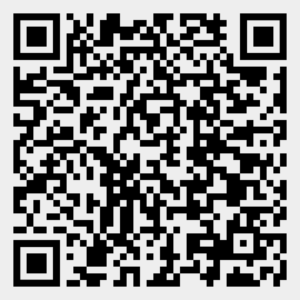
Further Reading for Specific Industries
- Chartered Professional Accountants of Ontario’s (n.d.) CPA Code of Professional Conduct and Student Code
- Ontario College of Teachers’s (n.d.) Ethical Standards
- Engineers and Geoscientists BC’s (n.d.) Code of Ethics
- Canadian Psychological Association’s (n.d.) Canadian Code of Ethics for Psychologists
- British Columbia College of Nurses & Midwives’s (n.d.) Code of Ethics for Registered Psychiatric Nurses
References
Afdal, H. W., & Afdal, G. (2019). The making of professional values in the age of accountability. European Educational Research Journal, 18(1), 105–124. https://doi.org/10.1177/1474904118797733
Bennis, W., Goleman, D., & O’Toole, J. (2008). Transparency: How leaders create a culture of candor. John Wiley & Sons.
British Columbia College of Nurses & Midwives. (n.d.). Code of ethics for registered psychiatric nurses. Retrieved March 6, 2025, from https://www.bccnm.ca/RPN/Pages/Code_of_Ethics.aspx
Caldwell, C. (2017). Understanding kindness–A moral duty of human resource leaders. The Journal of Values-Based Leadership, 10(2), 8. https://doi.org/10.22543/0733.102.1188
Canadian Psychological Association. (n.d.). Canadian code of ethics for psychologists. Retrieved March 6, 2025, from https://cpa.ca/aboutcpa/committees/ethics/codeofethics/
Center for Professional Personnel Development. (n.d.). What are ethical frameworks? PennState College of Agricultural Sciences. https://aese.psu.edu/teachag/curriculum/modules/bioethics-1/what-are-ethical-frameworks
Chartered Professional Accountants of Ontario. (n.d.). CPA code of professional conduct and student code. Retrieved March 6, 2025, from https://www.cpaontario.ca/protecting-the-public/governance/code-of-professional-conduct
Crane, A., Matten, D., Glozer, S., & Spence, L. (2019). Business ethics: Managing corporate citizenship and sustainability in the age of globalization (5th ed.). Oxford University Press.
CrashCourse. (2016a, November 14). Kant & categorical imperatives: Crash course philosophy #35 [Video]. YouTube. https://youtu.be/8bIys6JoEDw?si=Uf-Aps4VssIlrRZy
CrashCourse. (2016b, November 21). Utilitarianism: Crash course philosophy #36 [Video]. YouTube. https://youtu.be/-a739VjqdSI?si=wBhcvgNOouQk-ROQ
CrashCourse. (2016c, November 28). Contractarianism: Crash course philosophy #37 [Video]. YouTube. https://youtu.be/2Co6pNvd9mc?si=gB3rOWo51nQIES15
CrashCourse. (2016d, December 5). Aristotle & virtue theory: Crash course philosophy #38 [Video]. YouTube. https://youtu.be/PrvtOWEXDIQ?si=NCmk0b7oJplIZdfI
Engineers & Geoscientists British Columbia. (n.d.). Code of ethics. Retrieved March 6, 2025, from https://www.egbc.ca/complaints-discipline/code-of-ethics/code-of-ethics
The Ethics Centre. (2020a, April 13). What is ethics? [Video]. YouTube. https://youtu.be/u399XmkjeXo?si=SMexgjBbHL6sN0l0
The Ethics Centre. (2020b, April 14). Purpose, values, principles – An ethics framework [Video]. YouTube. https://youtu.be/KLvWMoFUboo?si=XgMCSdn2wGuHiWA9
Ethics Resource Center. (2003). Creating a workable company code of ethics: A practical guide to identifying and developing organizational standards (2nd ed.) [PDF]. https://www.ethics.org/wp-content/uploads/resources/Creating-A-Workable-Company-Code-of-Ethics.pdf
Gottfredson, L. S. (1988). Reconsidering fairness: A matter of social and ethical priorities. Journal of Vocational Behavior, 33(3), 293–319. https://doi.org/10.1016/0001-8791(88)90041-3
Greiner, A. M., & Kaldjian, L. C. (2018). Rethinking medical oaths using the Physician Charter and ethical virtues. Medical Education, 52(8), 826–837. https://doi.org/10.1111/medu.13581
Gundugurti, P. R., Bhattacharyya, R., Kondepi, S., Chakraborty, K., & Mukherjee, A. (2022). Ethics and law. Indian Journal of Psychiatry, 64(Suppl 1), S7–S5.. https://doi.org/10.4103/indianjpsychiatry.indianjpsychiatry_726_21
Jonsen, A. R. (2000). A short history of medical ethics. Oxford University Press.
Jostle. (n.d.). Integrity at work: Why it matters. Retrieved February 25, 2025, from https://blog.jostle.me/blog/integrity
Kleingeld, P. (1999). Kant, history, and the idea of moral development. History of Philosophy Quarterly, 16(1), 59–80. http://www.jstor.org/stable/27744805
McFall, L. (1987). Integrity. Ethics, 98(1), 5-20. https://doi.org/10.1086/292912
Navran, F. J. (2019). Defining values, morals, and ethics. Defining values, morals, and ethics. County News Online. https://www.countynewsonline.org/student/2019/jan/navron-ethics.html
Ontario College of Teachers. (n.d.). Ethical standards. Retrieved March 6, 2025, from https://www.oct.ca/public/professional-standards/ethical-standards
d’Oronzio, J. C. (2002). Practicing accountability in professional ethics. The Journal of Clinical Ethics, 13(4), 359–366. https://doi.org/10.1086/JCE200213413
Petrick, J. A., & Quinn, J. F. (1997). Management ethics: Integrity at work (Vol. 6). Sage.
Pless, N., & Maak, T. (2004). Building an inclusive diversity culture: Principles, processes and practice. Journal of Business Ethics, 54, 129–147. https://doi.org/10.1007/s10551-004-9465-8
Postema, G. J. (1980). Moral responsibility in professional ethics. New York University Law Review, 55, 63–89.
PowerDMS. (2020, December 29). Role of ethics and compliance in corporate culture. https://www.powerdms.com/policy-learning-center/role-of-ethics-and-compliance-in-corporate-culture
Riddick, F. A., Jr (2003). The code of medical ethics of the American Medical Association. Ochsner Journal, 5(2), 6–10.
Royal Architectural Institute of Canada. (2020). Chapter 1.3: Professional conduct and ethics. In Canadian handbook of practice for architects (3rd ed.). https://chop.raic.ca/chapter-1.3
Turilli, M., & Floridi, L. (2009). The ethics of information transparency. Ethics and Information Technology, 11, 105–112. https://doi.org/10.1007/s10676-009-9187-9
Universidad de Deusto / Deustuko Unibertsitatea. (2021, June 18). What is an ethical dilemma? [Video]. YouTube. https://youtu.be/cyj1wbfukUw?si=0seR6QL8y5F2KzaX
UvA ComScience Microlectures. (2017, October 5). Alternative paradigms: Care ethics and feminine ethics [Video]. YouTube. https://youtu.be/4iaCpAFypq8?si=O6L3yCiI_GCpyBfg
Wood, A. W. (2008). What is Kantian ethics?. In A. Wood (Ed.), Groundwork for the metaphysics of morals (pp. 157–182). Yale University Press. https://doi.org/10.12987/9780300128154-012

